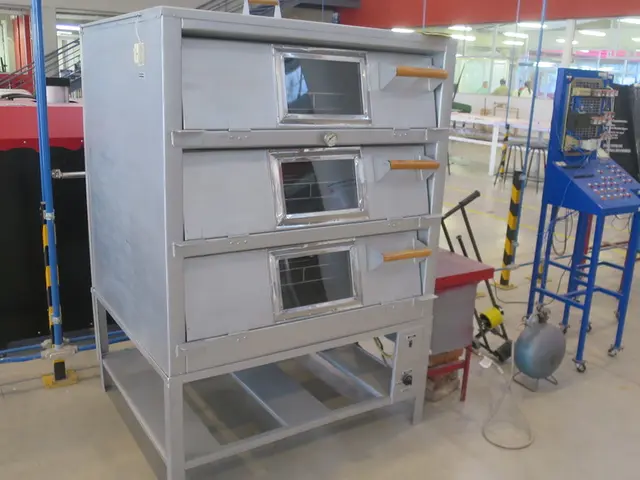Techniques for Recording Immersive Experiences that Foster Practical Competencies in Real Life
In the fast-paced world of professional settings, the need for effective learning and documentation techniques is more crucial than ever. A new approach is emerging, one that leverages the power of multiple senses to engage diverse learning pathways and facilitate meaningful, durable learning.
This approach, known as multi-sensory documentation, integrates visual, auditory, and tactile elements to create a rich learning environment. By engaging three or more senses simultaneously, this method results in 84% better information retention compared to single-sense documentation.
Visual Supports and Graphic Organizers
Visual supports such as charts, models, highlighted texts, and pictorial framing help focus attention and reinforce concepts visually. The use of pointers, colored pens, and visual signals enhances clarity and retention by emphasizing critical information.
Auditory Inputs
Auditory inputs, like varied voice intonation, storytelling, sound effects, and verbal cues, maintain engagement and reinforce learning through listening. These techniques are designed to make learning more engaging and memorable.
Interactive Multimedia Documentation
Interactive multimedia documentation, such as video capture, animations, and game-based learning tools, provide rich sensory stimuli and reduce cognitive overload by chunking information and using dual coding (combining words and images).
Tactile/Haptic Feedback
Tactile/haptic feedback, found in virtual simulations like force-feedback gloves or robotic interfaces, improve spatial understanding and motor skills by simulating touch and resistance in training environments.
Reflective Documentation and Self-Assessment
Reflective documentation and self-assessment opportunities enable individuals to actively engage with content by recording their learning process and metacognitive insights. This approach enhances deeper comprehension.
Portfolio Development
Portfolio development combining multiple media formats (written, photographic, video) creates comprehensive records that serve both assessment and reinforcement purposes. This method supports collaboration and communication in professional teams.
Social Interaction
Social interaction through avatars or collaborative virtual environments encourages active participation and team-based learning in immersive digital spaces.
Other effective strategies include allowing learners or professionals to choose their preferred learning modalities and incorporating real-life, problem-based tasks to connect new information with prior knowledge for better integration and recall.
The Power of Scent and Taste
Strategies like strategic scent placement throughout a workspace, scent-subject pairing, and taste associations create powerful memory anchors that enhance documentation understanding and retention.
In conclusion, the most effective multi-sensory documentation techniques for improving information retention and comprehension in professional settings incorporate a blend of visual, auditory, and tactile elements, combined with interactive and reflective methods to engage multiple senses and cognitive processes. By engaging diverse learning pathways, reducing cognitive load, and facilitating meaningful, durable learning, multi-sensory documentation is poised to revolutionize the way we learn and document in the modern world.
Sources: - Systematic use of visual, auditory, and tactile modalities, plus interactive and reflective elements for documentation and learning improvement [1][2][3][4]. - Multi-sensory engagement improves comprehension and retention by addressing different learning senses and styles [2][3][4]. - Reflective self-assessment and portfolio methods enhance metacognitive skills and learning documentation [1]. - Emerging immersive technologies use haptic feedback and avatars for more realistic, collaborative training [3]. - Creating audio summaries and reviews increases information retention by 38% and helps identify areas requiring additional attention or clarification. - Visual mapping techniques transform complex information into digestible formats for more effective brain processing. - Strategic scent placement throughout a workspace creates contextual memory triggers that improve recall accuracy by 29%. - Voice memo integration with written notes captures nuanced thoughts and spontaneous insights, reducing documentation time by 25%. - Virtual Reality and Augmented Reality applications allow for immersive documentation experiences that improve spatial understanding by 71% compared to traditional 2D documentation. - Movement-based learning documentation improves retention by 52% compared to stationary documentation methods. - Color-coded information systems improve information retrieval by 73% compared to monochrome documentation methods. - Diagram and flowchart integration engage spatial processing abilities and make abstract concepts more concrete. - Interactive presentation tools support real-time collaboration and feedback, improving engagement by 67% compared to static presentations. - Screen recording software captures complex processes in real-time, increasing understanding by 58% compared to written instructions alone. - Scent and taste association techniques create powerful memory anchors that enhance documentation understanding and retention. - Personalized sensory learning profiles optimize documentation effectiveness by identifying personal sensory strengths and adapting documentation methods accordingly. - Recording key concepts and explanations improves comprehension by 42% compared to silent reading alone. - Scent-subject pairing creates powerful recall triggers, improving retrieval speed by 34% compared to scent-free study sessions. - Cross-modal information reinforcement improves comprehension by 67% as the brain creates multiple retrieval pathways. - Assigning distinct scents to different rooms in a memory palace strengthens recall pathways by 41% compared to visual-only methods.
Multi-sensory documentation in education-and-self-development and personal-growth contexts leverages learning from this approach by integrating visual supports, auditory inputs, and tactile/haptic feedback to create a rich and immersive learning environment. This results in better information retention and deeper comprehension in tutorials and self-paced learning environments.
By incorporating interactive multimedia documentation, such as video capture, animations, and game-based learning tools, learners can engage with complex concepts in visually engaging ways, thereby promoting sustained learning and personal growth. Additionally, the use of reflective documentation and self-assessment opportunities, portfolio development, and social interaction through avatars or collaborative virtual environments can enhance the effectiveness of these multi-sensory learning strategies.




